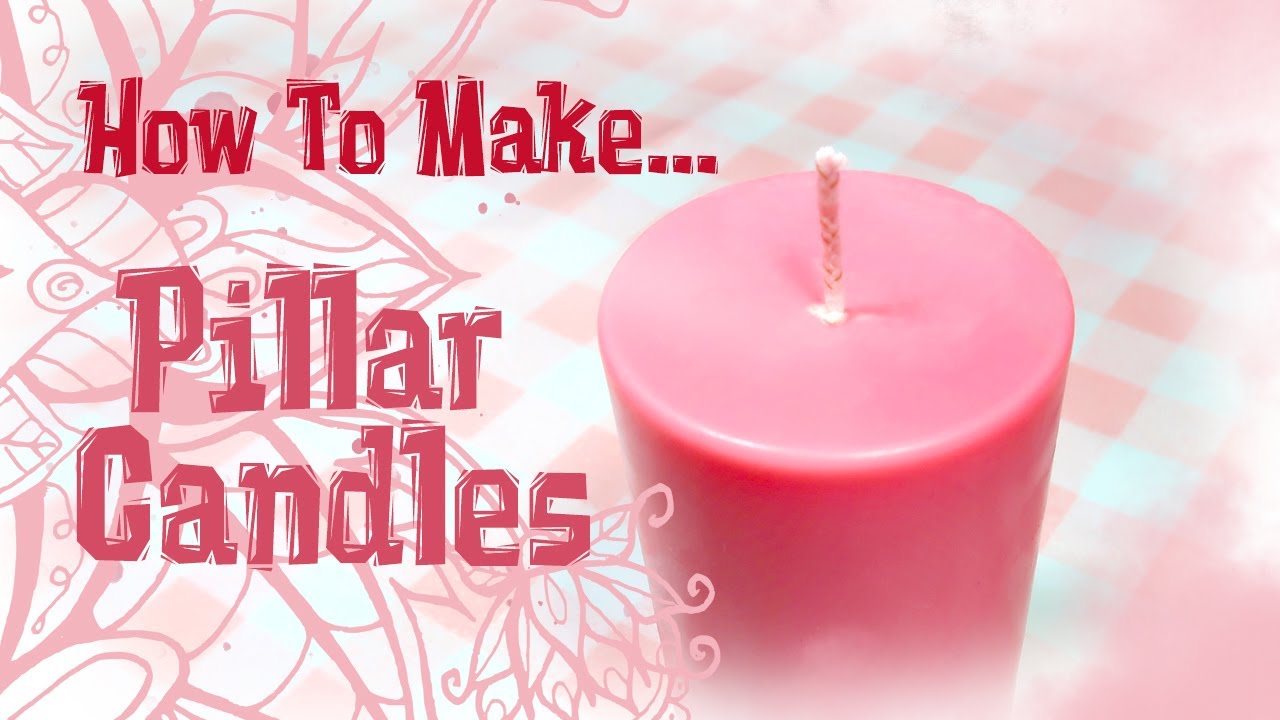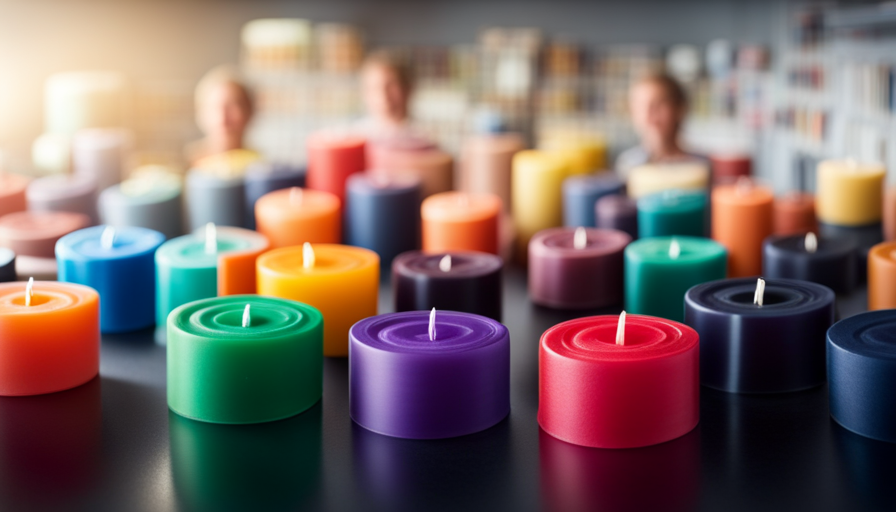People often mention how the soft glow of a candle can create a cozy atmosphere in any room. Yet, what they fail to mention is the annoyance of cleaning up wax drippings from walls.
As someone who loves to fill their home with the soothing scent of candles, I’ve had my fair share of battles with stubborn wax stains. After much trial and error, I’ve discovered a methodical approach to removing candle wax from walls that I’m excited to share with you today.
In this article, I will guide you through the step-by-step process of getting candle wax off of a wall. We’ll start by gathering the necessary supplies, then move on to scraping off excess wax and melting the remaining residue with a hairdryer.
Next, we’ll blot the melted wax with a paper towel and apply a cleaning solution to the stained area. After rinsing the wall with clean water and drying it thoroughly, we’ll assess the results and repeat the process if necessary.
Finally, I’ll share a tip on applying a protective coating to prevent future stains.
With these simple techniques, you’ll be able to restore your walls to their former glory and enjoy the ambiance of candlelight without worrying about those stubborn wax stains.
Let’s get started!
Key Takeaways
- Scrape off excess wax using a plastic spatula or credit card
- Use a hairdryer or heat gun to melt the remaining wax and blot it with a clean white cloth or paper towel
- Apply a cleaning solution like vinegar and water or rubbing alcohol to remove any remaining wax residue
- Gently scrub the stain with a soft cloth or sponge using gentle circular motions to remove stubborn residue without damaging the wall
Gather the necessary supplies
Now you’re ready to tackle that stubborn candle wax – gather up all the supplies you’ll need!
To start removing wax stains from your wall, you’ll need a few items. First, grab a plastic spatula or a butter knife with a dull edge. This will help you scrape off excess wax without damaging the wall.
Next, get a clean white cloth or paper towel to dab away any remaining residue. You’ll also need a mild detergent or dish soap mixed with warm water. This will be used to clean the area after removing the wax.
Lastly, grab a hairdryer or a heat gun. Heat is essential in softening the wax, making it easier to remove.
Once you have gathered all these supplies, you can move on to the next step of scraping off excess wax. By using these tools and following the right techniques, you’ll be able to get rid of the wax stains while preventing any further damage to your wall.
Scrape off excess wax
First, you’ll want to gently peel away any excess wax on the wall. To do this, follow these steps:
-
Use a plastic scraper or a credit card to scrape off as much of the wax as possible. Be careful not to damage the paint or the wall surface.
-
If there’s still some wax residue left, you can try using alternative cleaning solutions. One option is to mix equal parts of vinegar and water in a spray bottle. Spray the solution onto the wax and let it sit for a few minutes. Then, use a clean cloth or sponge to wipe away the wax.
-
Another alternative is to use rubbing alcohol. Apply a small amount of alcohol onto a clean cloth and gently rub the wax until it starts to dissolve. Continue wiping until the wax is completely removed.
Now that you’ve removed the excess wax, it’s time to move on to the next step: using a hairdryer to melt the remaining wax.
Use a hairdryer to melt the remaining wax
To effectively remove the remaining wax, I use a hairdryer to gently melt it away. Using a hairdryer for other household cleaning tasks is a smart and practical choice. The benefits of using a hairdryer to remove candle wax from walls are numerous.
First, the heat from the hairdryer melts the wax, making it easier to wipe away. Additionally, the warm air helps to soften the wax, preventing it from spreading and making the cleaning process more manageable. Plus, using a hairdryer allows for precise and controlled melting of the wax, minimizing the risk of damaging the wall surface.
When using a hairdryer to remove wax from the wall, it’s important to keep a few things in mind. Start by setting the hairdryer to a low or medium heat setting to avoid overheating the wax or the wall. Hold the hairdryer a few inches away from the wall and move it in a circular motion over the wax. As the wax begins to melt, use a paper towel to gently blot the melted wax, absorbing it into the towel. This will help prevent the wax from spreading or smearing on the wall.
Now, let’s move on to the next step of blotting the melted wax with a paper towel.
Blot the melted wax with a paper towel
Once you’ve melted away the stubborn residue with a hairdryer, go ahead and effortlessly blot away the remnants with a simple paper towel. This paper towel technique is a quick and effective way to remove any remaining candle wax from your wall.
To begin, fold a clean paper towel into a small square and gently press it onto the melted wax. Apply slight pressure and move the paper towel in a circular motion. The melted wax will transfer onto the paper towel, leaving your wall clean and wax-free. If the first blotting doesn’t remove all the wax, fold the paper towel to a clean area and repeat the process until the wall is completely clean.
If you don’t have a paper towel on hand, there are alternative cleaning methods you can try. A cotton cloth or an old t-shirt can be used instead of a paper towel. Simply follow the same blotting technique to remove the melted wax.
Once you’ve thoroughly blotted away the wax, it’s time to move on to the next step: applying a cleaning solution to the stained area.
Apply a cleaning solution to the stained area
Now you can easily tackle the stubborn stain by applying a powerful cleaning solution to the affected area. Here are some alternative cleaning solutions for removing candle wax from walls:
-
Vinegar and water mixture: Mix equal parts of white vinegar and water in a spray bottle. Spray the solution onto the stained area and let it sit for a few minutes. Then, wipe it off with a clean cloth.
-
Rubbing alcohol: Dampen a cloth with rubbing alcohol and gently rub the stained area in circular motions. The wax should start to dissolve and come off the wall.
-
Baking soda paste: Make a paste by mixing baking soda with a small amount of water. Apply the paste to the stain and let it sit for a few minutes. Then, scrub it off with a soft cloth.
-
Dish soap solution: Mix a few drops of dish soap with warm water. Dip a sponge or cloth into the solution and gently scrub the stained area.
Discussion Idea 1: Have you tried any of these alternative cleaning solutions? Share your experience and let us know which one worked best for you.
Discussion Idea 2: What tips do you have for preventing candle wax stains on walls? Share your insights and help others avoid this frustrating issue.
To continue removing the wax, gently scrub the stain with a soft cloth or sponge.
Gently scrub the stain with a soft cloth or sponge
After applying the cleaning solution, you can gently scrub the stained area with a soft cloth or sponge to effectively remove the stubborn residue. This step is crucial in getting rid of the candle wax from the wall.
As you scrub, make sure to use gentle circular motions to avoid damaging the paint or wallpaper. If the stain persists, you can try alternative cleaning methods such as using a hairdryer to melt the wax and then blotting it with a clean cloth.
Additionally, to prevent candle wax stains in the first place, consider using candle holders or drip guards to catch any dripping wax. Placing a protective barrier, such as aluminum foil or a heat-resistant mat, underneath the candle can also help.
Once you have successfully scrubbed away the wax residue, it’s important to rinse the area with clean water. This will ensure that any remaining cleaning solution or wax particles are completely removed from the wall.
With this, you can move on to the next step of the cleaning process.
Rinse the area with clean water
To effectively remove any remaining residue, take a moment to rinse the area with clean water, ensuring a fresh and spotless finish.
Here are some discussion ideas to consider when rinsing the wall:
- Warm water is more effective than cold water in removing candle wax stains. The heat helps to soften the wax, making it easier to lift off the wall. So, be sure to use warm water when rinsing the area.
- If warm water doesn’t completely remove the stain, there are alternative methods you can try. One option is to use a hairdryer on low heat to melt the wax, then gently wipe it away with a cloth. Another method is to place a brown paper bag or a few layers of absorbent paper towels over the wax and apply heat with an iron on a low setting. The wax should transfer onto the paper, leaving your wall clean.
- Once you’ve rinsed the area with warm water, it’s important to dry the wall thoroughly. This will prevent any residual moisture from seeping into the wall and causing damage.
Now that the area is rinsed, let’s move on to the next step of drying the wall thoroughly.
Dry the wall thoroughly
Make sure you thoroughly dry the area, as studies have shown that proper drying can significantly reduce the risk of mold growth. After rinsing the wall with clean water, it’s important to dry it thoroughly to prevent any remaining moisture from seeping into the wall and causing damage.
To dry the wall, start by using a clean, dry cloth or towel to gently blot the area. Avoid rubbing or scrubbing, as this can spread the wax and make it harder to remove. Next, use a hairdryer on a low heat setting to gently blow-dry the wall. Keep the hairdryer at a safe distance from the wall to prevent any heat damage.
Repeat this process until the wall is completely dry. By following these steps, you can effectively remove candle wax from a wall and prevent any unsightly stains.
Once the wall is dry, assess the results and repeat if necessary, ensuring that the area is completely clean before moving on to the next step.
Assess the results and repeat if necessary
Once you’ve dried the wall, take a step back and assess the results to see if any traces of wax remain. If necessary, repeat the process to ensure a completely clean surface. Carefully examine the area where the wax was present, checking for any leftover residue or discoloration. If you notice any remnants of wax, it means that the initial cleaning was not entirely successful. Don’t worry, though; this is a common occurrence, and it can easily be remedied.
To repeat the process, start by reheating the wax using a hairdryer or a warm iron wrapped in a clean cloth. Once the wax becomes pliable, gently scrape it off the wall using a plastic scraper or a credit card. Be careful not to damage the wall surface while doing this.
After removing the bulk of the wax, use a cleaning solution specifically designed for the wall material and gently wipe the area with a clean cloth. Assess the effectiveness of the cleaning solution used and repeat the process if necessary, until all traces of wax are completely gone.
Now, let’s move on to the next step of the wall-cleaning process: applying a protective coating to prevent future stains.
Apply a protective coating to prevent future stains
After ensuring a completely clean surface, it’s time to safeguard against future stains by applying a protective coating, like a wall sealant or paint. A protective coating not only prevents candle wax from sticking to the wall but also offers other benefits.
Here are a few reasons why you should consider applying a protective coating:
-
Long-lasting protection: A high-quality protective coating forms a barrier between the wall and the wax, making it easier to clean any accidental spills or drips. It ensures that the wax doesn’t penetrate into the wall, saving you the hassle of removing stubborn stains.
-
Easy maintenance: Once you’ve applied a protective coating, maintaining a clean wall becomes a breeze. Regular dusting or wiping with a damp cloth is usually sufficient to keep the wall looking fresh and free from wax residue.
-
Enhanced durability: Protective coatings not only shield the wall from wax stains but also add an extra layer of durability. They can help prevent scratches, scuffs, and other minor damages, ensuring that your wall stays in pristine condition for longer.
-
Alternative methods: If you prefer not to use a protective coating, there are alternative methods to prevent wax stains. You can place a protective barrier, such as a heat-resistant mat or a piece of aluminum foil, between the candle and the wall. This way, any drips or spills will be caught by the barrier rather than staining the wall.
By applying a protective coating, you can enjoy the benefits of long-lasting protection, easy maintenance, enhanced durability, and explore alternative methods for preventing wax stains.
Frequently Asked Questions
What types of cleaning solutions can be used to remove candle wax from a wall?
When it comes to removing candle wax from a wall, there are a few types of cleaning solutions and alternative methods that can be used.
Some common cleaning tools include a plastic scraper, a hairdryer, and an iron with a brown paper bag.
For cleaning solutions, rubbing alcohol or vinegar can be effective.
Another alternative method involves using an ice pack to freeze the wax and then gently scraping it off.
Can I use a regular towel instead of a paper towel to blot the melted wax?
Yes, you can use a regular towel instead of a paper towel to blot the melted wax. In fact, using different types of fabric can be an effective alternative method for removing wax. I once had wax spill on my carpet, and I didn’t have any paper towels on hand. So, I grabbed a clean towel and gently pressed it onto the wax, allowing the fabric to absorb the melted wax. It worked like a charm!
How long should I use the hairdryer to melt the remaining wax?
To melt the remaining wax, I recommend using a hairdryer on a low heat setting. Start by holding the hairdryer about 6 inches away from the wax and moving it back and forth in a sweeping motion. This will gradually heat the wax and make it easier to remove.
If you don’t have a hairdryer, you can also try using alternative heat sources like a hot water bottle or a heat gun, but be sure to use caution and not overheat the wall.
Is it necessary to dry the wall thoroughly after rinsing the area with clean water?
Yes, heat is necessary to remove candle wax from a wall. Using a hairdryer to melt the wax and then wiping it off with a cloth is an effective method. However, scraping can also be used instead of rinsing. It’s important to scrape gently to avoid damaging the wall.
After removing the wax, it’s not necessary to dry the wall thoroughly as long as all the wax residue has been removed.
What type of protective coating should I apply to prevent future stains?
To prevent future wax stains on walls, there are several protective coating options available. One effective option is using a clear, water-based sealer. This type of coating creates a barrier that prevents wax from penetrating the wall surface.
Another option is applying a wax repellent spray, which makes the wall less likely to absorb wax. Regularly maintaining and reapplying these protective coatings will help ensure your walls stay stain-free and easy to clean.
Conclusion
After following these steps, I was able to successfully remove the stubborn candle wax from my wall. It was like a victory dance, watching the wax melt away under the heat of the hairdryer and being effortlessly soaked up by the paper towel.
With the cleaning solution and a good rinse, my wall was left spotless and as good as new. Remember to dry the wall thoroughly and apply a protective coating to prevent future stains.
Now, my wall is ready to shine like a star, free from any wax residue.










